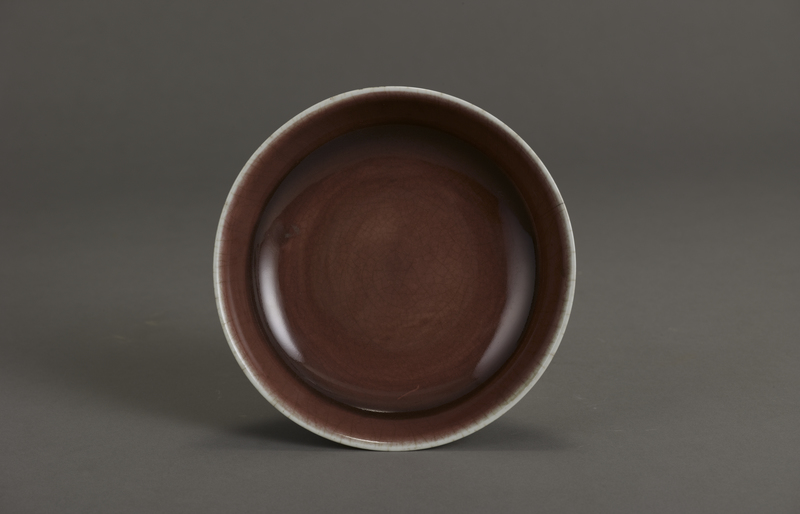Red Glazed Plate

Xuande reign period, Ming (1426-1435AD)
Height: 4.3cm, Diameter of mouth: 18.3cm, Diameter of base: 11.6cm
Collected in 1956
This plate, which features scarlet glaze, was produced by an official kiln in the Xuande reign period of the Ming dynasty; this ware was as precious as Ru ware. The plate bears an inscription in regular script “produced in the Xuande reign period of the Ming Dynasty” at the bottom.
The plate is mainly coated with red glaze. Its edge and bottom is coated with white glaze. It is a masterpiece due to its excellent design and lurid color of glaze. According to historical records, red glazed ceramics were extremely precious during Ming Dynasty. The technique of producing red glazed ceramics was first applied in Changsha Kiln in the Tang Dynasty and became mature during Yongle and Xuande Periods of the Ming Dynasty. The lustrous red glaze was also called “ruby red”.
深入探索
The Evolution of Red Glazed Ceramics
Since ancient times, there was such a tradition that red was very popular in China. Red symbolized happiness as it was everywhere when there was a festival or a wedding. Lanterns, festoons, clothes and many tools were all in red. Red also symbolized nobility. For example, the walls of many palaces and temples were in red. Red was the main color adopted when ancient Chinese performed sacrificial rituals.
It was during Tang Dynasty that ceramics were first coated in red. Before that, ceramics of various colors already existed, including light green, yellow, white, brown, black and green. Up to now, some copper red glazed ceramics produced with high temperature by Changsha Kiln of Tang Dynasty were discovered. It was a milestone in the evolution of red glazed ceramics; however, the technique was not well developed at that time since green color often unexpectedly appeared in the red ceramics.



